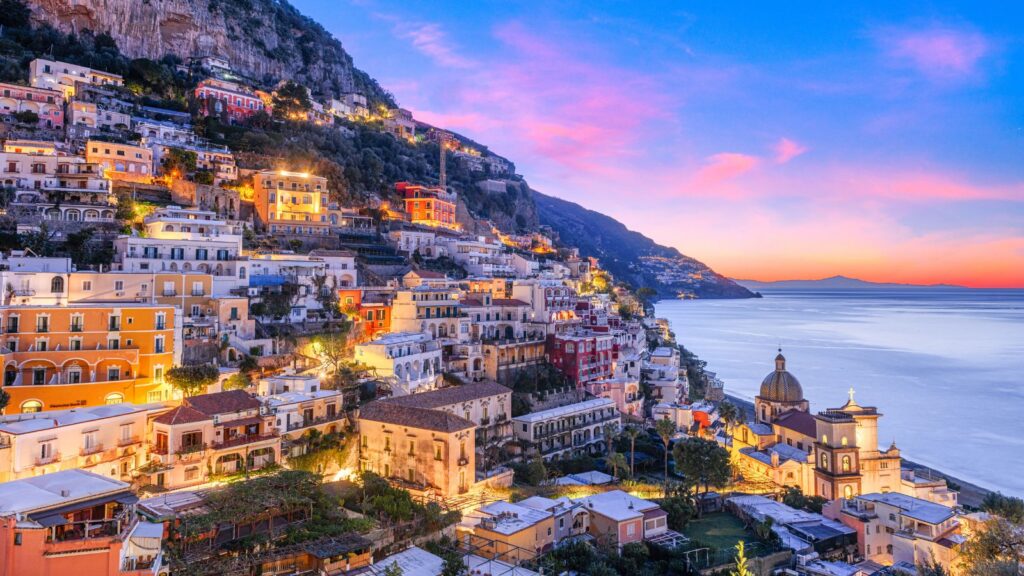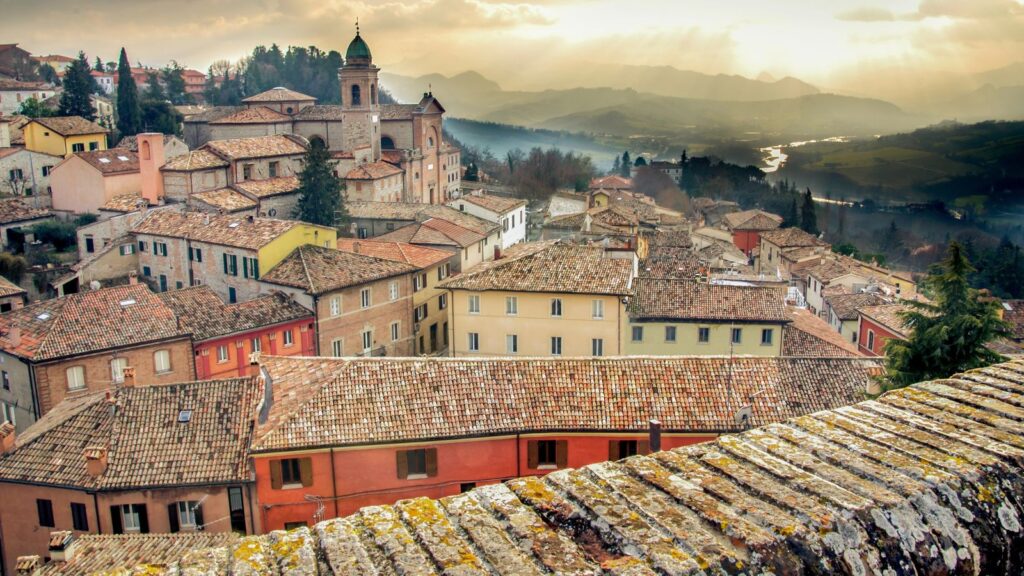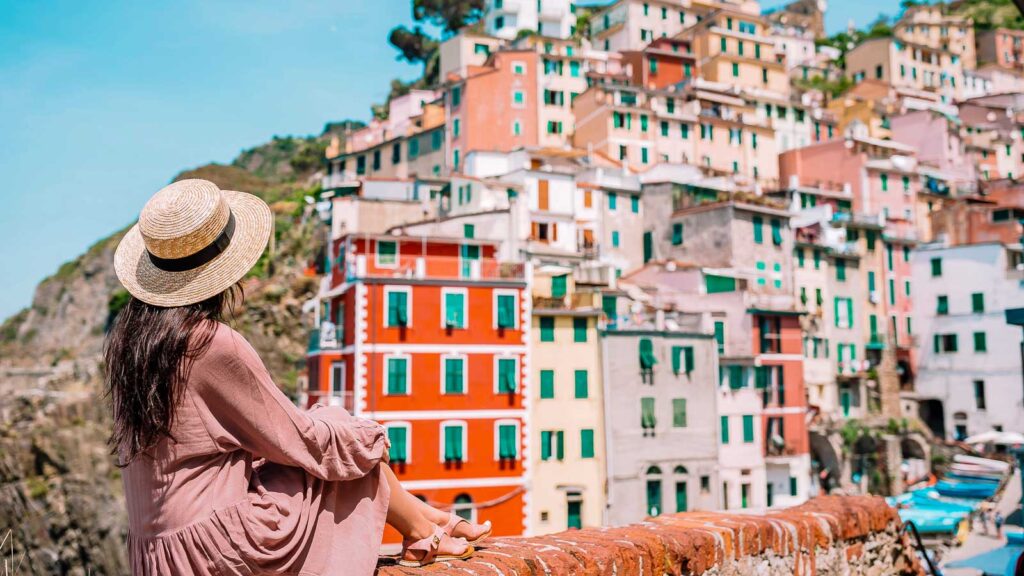50+ Italy Packing List Must-Haves You’ll Wish You Brought to Europe’s Most Romantic Country
Italy’s appeal is undeniable: cobblestone streets that lead to centuries-old piazzas, sun-soaked coastlines, art-filled cities, and espresso runs any time of the day. But its mix of climates and landscapes can have you exploring ancient ruins under the sun and the next you’re winding through vineyard-lined hills or dressing up for dinner in a city square.
This Italy packing list cuts through the guesswork with essentials that that works across regions to practical items you’ll be glad you didn’t leave behind. These are the pieces that make exploring Europe’s most romantic country feel effortless from the moment you land.

Things to Know Before Packing for Italy
Italy is all about walking. Walking on cobbled streets in Florence, the Spanish Steps in Rome, or canalside strolls in Venice. The big mistake travelers make? Packing too much or bringing the wrong shoes. Luggage will be dragged on trains, across piazzas, and sometimes up to third-floor walk-ups in family-run hotels. Less is more here.
Italy’s Weather Curveballs
Italy isn’t just “Mediterranean sunshine.” Summers in Rome, Naples, and Sicily can soar into the 90s, and heat waves have gotten worse in recent years. Northern cities like Milan and Venice are hot too, but humidity makes them feel swampy.
Winters in the north bring fog and chill, while the Alps turn into full-on ski country. Tuscany and Umbria are mild in spring and fall, but showers are common.
Cultural Notes That Change How You Pack
Italians are famously stylish and most people on the street just look put-together. Shorts and tank tops scream tourist in many city settings, though they’re fine at the beach. Italians also appreciate clean, classic looks: neutral tones, well-fitted clothes, and a pair of shoes that aren’t falling apart.
In churches like St. Peter’s Basilica or Florence’s Duomo, covering shoulders and knees is required. A scarf or light shawl solves this instantly.

What to Wear in Italy: Clothes That Actually Work
You’ll want items that work for everything from vineyard tastings in Tuscany to aperitivo hours in Milan. Think comfortable but chic.
- Breathable tops – cotton, linen, or blends for hot days.
- Tailored trousers or jeans – versatile for day-to-night.
- Casual dresses or skirts – easy to style up or down.
- Light sweater or cardigan – for cool evenings.
- Trench coat or stylish jacket – perfect in spring and fall.
- Comfortable walking shoes – leather sneakers or flats that handle cobblestones.
- Sandals (non-flip-flop) – sleek for summer outings.
- Scarf or shawl – doubles as fashion and church cover-up.
- One dressier outfit – for nice dinners or opera nights.
- Nice sunglasses – practical and stylish.
- Fashionable hat – looks good and shields from the sun.
Regional Packing Differences in Italy
- Northern Italy (Milan, Lake Como, Dolomites): Winters are cold, summers mild. Pack layers, stylish outerwear, and sturdy shoes for Alpine hikes.
- Central Italy (Rome, Florence, Tuscany): Hot summers, cooler nights. Linen shirts, breathable dresses, and a stylish hat for shade.
- Southern Italy (Naples, Amalfi Coast, Sicily, Puglia): Scorching summers. Lightweight clothing, reef-safe sunscreen, and sandals you can walk in.
- Venice: Waterproof shoes or quick-dry sandals in fall/winter when acqua alta (high water) can flood the city.
- The Islands (Sardinia, Capri, Sicily): Swimsuits, cover-ups, and sandals that can go from the beach to dinner.

Bags and Day-to-Day Essentials
Italian cities are crowded, and pickpockets are real, especially in Rome, Naples, and Florence. You’ll want bags that keep your belongings safe without looking too “touristy.”
- Crossbody bag with zipper – safer in crowded metros and piazzas.
- Daypack (small) – for day trips to Cinque Terre or Pompeii.
- Reusable shopping tote – markets and shops often charge for bags.
- Money belt or hidden pouch – extra security in big cities.
- Compact umbrella – sudden showers happen year-round.
Eating, Drinking, and Staying Comfortable
Italy is all about food and long days of sightseeing. That means dealing with heat, wine, gelato, and lots of walking. Staying comfortable keeps you enjoying la dolce vita.
- Hand sanitizer – useful in markets and train stations.
- Reusable water bottle – fill up at free public fountains in Rome and Florence.
- Electrolyte packets – great after hot days or wine-heavy nights.
- Basic first aid kit – bandages for blisters, stomach relief, pain meds.
- Prescription meds – in labeled bottles for customs.
Tech That Makes Italian Trips Easier
Photos, maps, trains, and translation apps—your tech has to keep up with Italy’s pace.
- Universal adapter (Type C, L plugs) – Italy uses different sockets than some EU countries.
- Portable charger – train days drain phones fast.
- Offline maps app – Venice is a maze, and GPS doesn’t always work.
- Camera (or phone with good storage) – you’ll take hundreds of photos.
- Headphones – for long train rides between cities.
- E-reader or tablet – for downtime in piazzas or on ferries.
🚫 What You Don’t Need in Italy
Certain items just weigh you down and make you stand out.
- Bulky luggage – hard to carry on trains and buses.
- High heels – cobblestones destroy them.
- Overly casual gym clothes – fine for workouts, not for sightseeing.
- Full-size toiletries – buy locally or use travel size.
- Excess electronics – one main device is enough.
Catherine Xu is the founder and author of Nomadicated, an adventure travel blog that helps travelers cross off their bucket list. Since discovering traveling in 2015, she has lived and journeyed to 65 countries across 5 continents and vanlifed the west coast USA for 2+ years. These days, she splits her time in Southeast Asia and California while sharing her travel stories and resources based on first-hand experiences. Catherine's other works has been referenced in major publications like MSN, Self, and TripSavvy.

